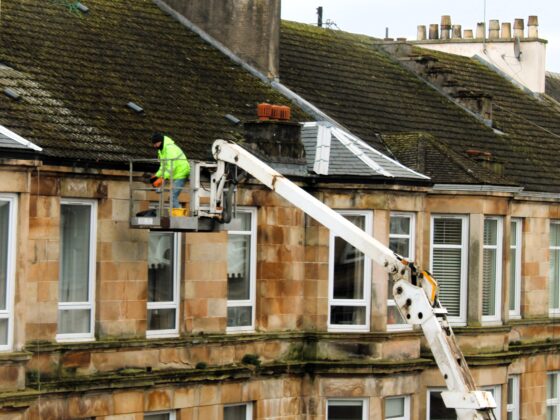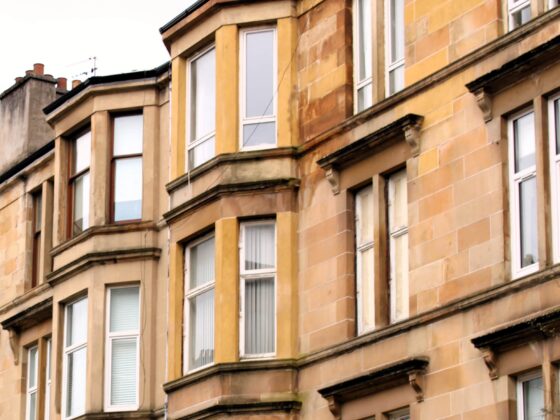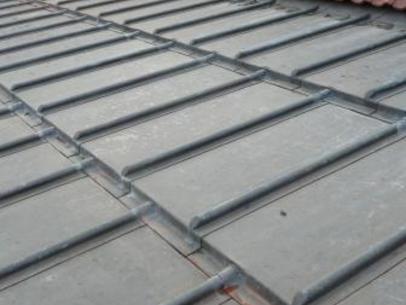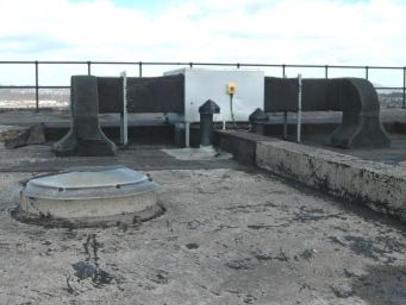Removing paint from stone can cause damage, so removal methods need to be carefully investigated before you go ahead.
Graffiti
While you are often advised to remove graffiti as soon as possible to deter further vandalism, you should take advice from your local council on how to do this as you can damage the stone work further.
 Graffiti. Take advice on removal to avoid further damage to the stone.
Graffiti. Take advice on removal to avoid further damage to the stone.
Should we remove paint from stonework?
Paint can stop stone from breathing, causing damage to stone, however:
- stone may have been painted to cover old repairs – removing paint may leave a poor appearance
- paint may stop rain entering very porous stone
- painting may be the traditional style in your area – removing paint may require planning consent
- paint removal from listed buildings or in conservation areas requires consent
- chemical paint removers can cause health risks and lead-based paint is a hazardous waste
- paint may be exceedingly hard to remove from porous stone types, especially where thickly applied historic paints have been used
Removing paint will always cause some damage to the stone, so carry out a test patch first.
If your building is harled (rendered), then it is important to keep the harling painted. This will cover hairline cracks which allow moisture to get behind the harling, causing it to break off. Use specialist breathable paints available from lime suppliers and others sources. Some types of harling are self-coloured and not painted.
Paint removal methods
Always start with the least aggressive method. Use a suitably qualified professional to undertake work for you.
 Patch testing paint removal. Should always be undertaken to check that no damage is caused to the stone.
Patch testing paint removal. Should always be undertaken to check that no damage is caused to the stone.
These are the methods you can use, starting from the least aggressive and working to the most aggressive:
- weathering: let nature take its course and allow the paint to deteriorate naturally – however, the intermediate look may not be acceptable
- water washing: gentle sponging or scrubbing with a soft bristle brush may be effective for emulsions, limewash, and other very old, friable paints
- steam stripping: superheated low-pressure steam stripping for water-thinned paints, such as emulsions, can clean without saturating the surface of the stone
- solvent (non-caustic) chemical removers: a water-soluble remover should be considered before use of a methylene chloride-based solvent – they are best suited for the removal of oil or latex-based paints, but may not be as effective with others
- alkaline (caustic) chemical removers e.g. caustic soda or potash: these can be particularly damaging to stonework and can be absorbed by porous stonework, where the damaging effects can continue long after – avoid unless no immediate or ongoing damage to the stonework can be demonstrated – chemical removers should be thoroughly washed from the stone afterwards to avoid leaving any residue
- manual abrasive: scraping, sanding, wire bristle brushing or other aggressive manual cleaning can cause significant damage to stone
- mechanical abrasive: high-pressure water cleaning, sand or grit-blasting can also cause significant damage to stonework, making it more vulnerable to weathering and result in loss of architectural detail
Whatever the method, it is often advisable to allow particularly stubborn paint to remain and weather naturally to avoid damage to stonework or pointing. Such damage can lead to a need for more expensive repairs or repointing.
Professional help recommended?
Although the work may appear straightforward, ensure your builder or tradespeople have the skills for the job. If in any doubt, get professional help to specify and organise the repair.
Who pays?
Paint removal is maintenance and a common repair. Painting walls for purely decorative reasons is an improvement.
Further information
- Historic Scotland Inform Guide ‘Cleaning Sandstone: Risks and Consequences’
- Historic Scotland Inform Guide ‘Graffiti Removal’
- Historic Scotland Inform Guide ‘Growing Old Gracefully’
- Historic Scotland ‘Stone Cleaning: A Guide for Practitioners’
- Historic Scotland ‘Guidance on the Principles of Listed Building Consent’
- Historic Scotland ‘Laser Stone Cleaning’




